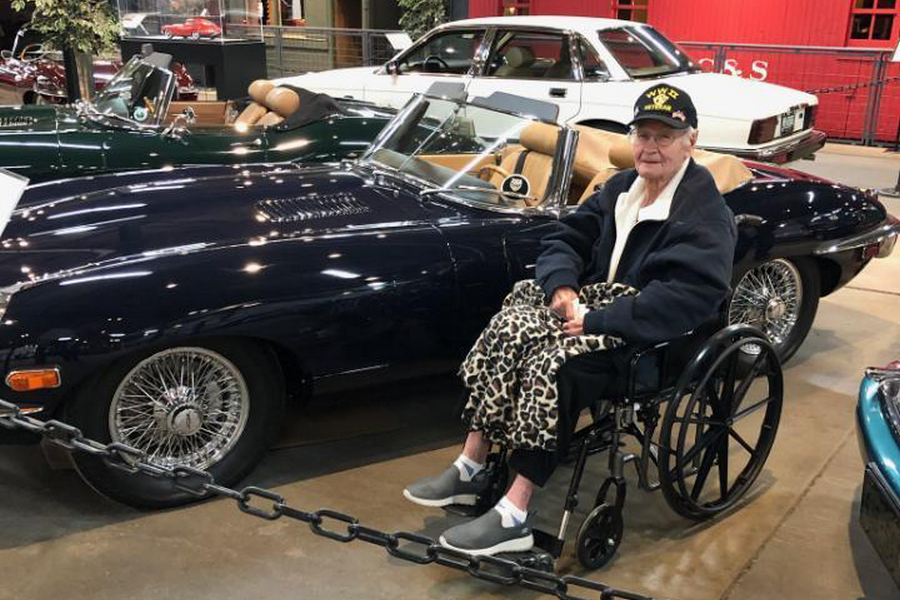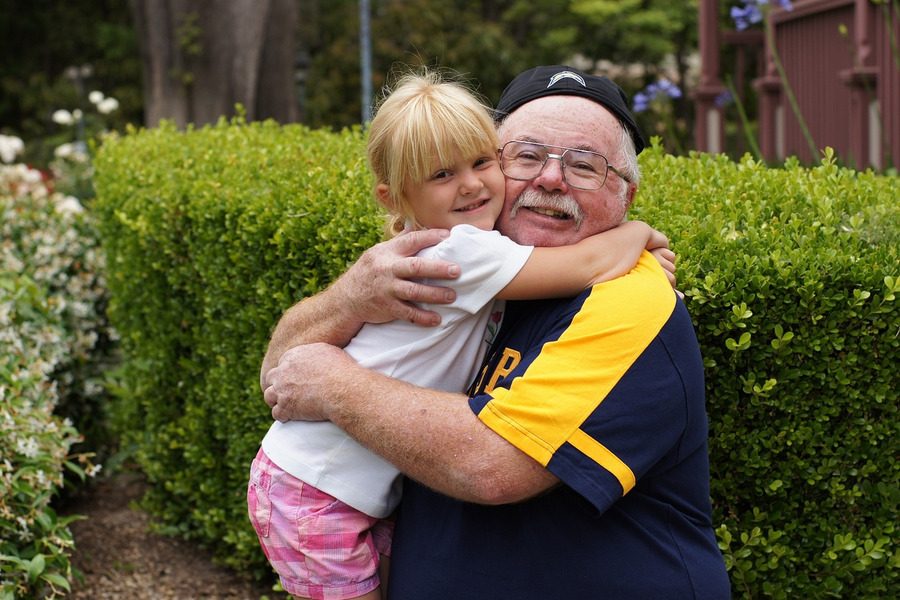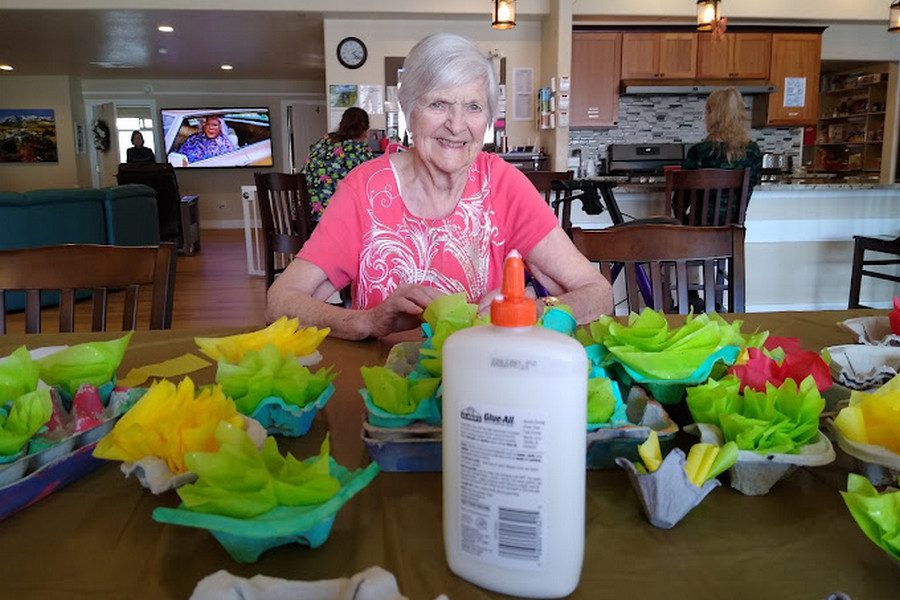A memory care activities calendar is perfect for memory care homes.
As we get older, our brains begin to change. For many of us, this process makes it difficult to remember things that used to come naturally. Unfortunately, this can have a significant impact on our quality of life.
Memory care is designed to help seniors who are experiencing memory loss or other cognitive impairments. While there are many different approaches to memory care, one thing is true for all of them: activities are an essential part of the equation.

The Power of a Memory Care Activities Calendar
There are many reasons why activities are so important for seniors in memory care facilities. First and foremost, these activities help keep residents engaged and active both physically and mentally.
This is critical because staying active has been shown to improve cognitive function as we age. Additionally, engaging in social activities with other residents provides important opportunities for connection and friendship – something that can be hard to come by in a traditional nursing home setting.
By providing a wide range of stimulating activities designed to engage residents’ minds, bodies and spirits, memory care facilities can help seniors maintain their independence and enjoy a higher quality of life than they otherwise would be able to achieve on their own.
One key way that memory care facilities promote engagement is through the use of an activity calendar that lays out scheduled events throughout the month or year.
By offering a variety of structured activities and events throughout each week or month – from exercise classes and art projects to outings and special performances – staff provide residents with structure while also promoting social interactions that keep people engaged both mentally and emotionally.
In the following sections we’ll take an in-depth look at how this approach works in practice by exploring key aspects of memory care calendars. This includes monthly themes, daily activities, special events, outings, reminiscing sessions, intergenerational gatherings and spiritual practices.

Monthly Themes
A Memory care activities calendar usually revolves around specific themes for each month of the year. These themes help guide the activities and give residents a sense of purpose and excitement. Each theme is carefully chosen to cater to the different interests and needs of residents, making sure that there’s something for everyone.
One example of a monthly theme could be holidays. During the month of December, memory care facilities could host a variety of holiday-themed activities such as cookie decorating, gift wrapping, and caroling.
These activities not only help residents feel festive but also provide an opportunity for socialization with their peers. Other monthly themes could focus on seasons such as summer or fall. For example, Applewood Our House holds a popular annual Autumn Harvest Festival.
Memory care facilities could plan outdoor activities such as picnics or gardening during the summer months while hosting indoor cozy events such as knitting or book clubs during fall months.
The themes can also be based on hobbies such as art, cooking, or music. For instance, September can have a music theme where residents participate in musical performances and attend concerts that promote relaxation and stress relief.
Overall, memory care facilities design monthly themed calendars that cater to the different tastes and preferences of its residents while providing opportunities for engagement in new experiences and social interaction.

Daily Activities
A Day in the Life of a Memory Care Resident
Memory care residents have access to a wide variety of daily activities that are designed to engage and stimulate them both mentally and physically.
Exercise classes are a great way for residents to stay active and maintain their mobility. These classes can include gentle stretching, seated exercises, or even low-impact aerobics.
They are tailored to the residents’ abilities and interests, so everyone can participate at their own level. Art therapy is another popular activity that allows residents to express themselves creatively through painting, drawing, or other artistic mediums.
Music therapy is also available for residents who enjoy singing or playing instruments. For those who prefer something more competitive, games like bingo or trivia can be a fun way to socialize and challenge their minds.
These games can be adapted to suit different levels of cognitive ability so that everyone can participate. In addition to these activities, there may also be opportunities for gardening or cooking classes which allow residents to work with their hands and engage with the natural world.
Overall, memory care communities strive to create a schedule of daily activities that promote engagement and enjoyment while also supporting each resident’s unique needs and abilities. By offering a diverse range of options, memory care homes empower residents to make choices about how they spend their time while ensuring they receive the support they need for optimal wellness.

Special Events
While daily activities serve as the foundation of memory care programs, special events are the cherry on top that residents look forward to all year long. Applewood Our House strives to plan a diverse range of events that cater to different interests and abilities. From talent shows to pet therapy visits, we aim to provide an experience that is not only enjoyable, but also meaningful for our residents.
Talent Shows: Showcasing Hidden Talents
Everyone has a talent or two worth sharing, regardless of their age or cognitive abilities. That’s why many memory care communities organize a talent show every year where residents can showcase their unique skills in front of their peers and staff members.
From singing to dancing, magic tricks to storytelling, it’s always heartwarming to witness the amazing talents that residents have been hiding within them all this time. A talent show is not just a fun event; it’s also an opportunity for residents to build confidence and boost self-esteem.
Many seniors in memory care feel like they’ve lost touch with who they are due to cognitive decline. A talent show helps them regain some sense of identity and purpose by allowing them to share something they’re passionate about with others.
Pet Therapy Visits – Furry Friends as Therapy Companions
Pets have a unique ability to bring joy and comfort into people’s lives, especially those in memory care who may feel lonely or isolated at times. That’s why we coordinate regular pet therapy visits with trained dogs, cats, horses, rabbits, and other animals who have been specifically trained for therapeutic purposes.
The benefits of pet therapy are numerous; it can reduce stress levels, improve mood, lower blood pressure and even alleviate pain symptoms.
Many of our residents have had pets throughout their lives and miss having that companionship now that they’re in memory care. Pet therapy visits give them a chance to interact with animals in a controlled and safe environment, which can bring back happy memories and provide comfort.
In addition, Applewood Our House has a resident house dog that lives at each Applewood Our House location.
Guest Speakers – Learning from Experts
We believe that learning is a lifelong process, regardless of age or cognitive abilities. That’s why we invite guest speakers from various fields to come and share their knowledge and expertise with our residents.
Whether it’s a local historian talking about the history of our town, former Denver Broncos football players remembering great plays or games, or a musician explaining how to play an instrument, there’s always something new to learn.
Guest speakers not only provide valuable information but also broaden our residents’ perspectives and stimulate their minds. It’s important for seniors in memory care to stay engaged with the world around them, and guest speakers help make that happen.

Outings - Exploring the World Outside
Memory care residents can feel isolated from the world outside. That’s why we plan outings to local attractions and museums to keep them engaged with the world around them. These outings provide a change of scenery and offer opportunities for residents to learn new things, socialize, and have fun.
Some of our favorite outings is going to the local museum, fishing, bowling, shopping, having ice cream, or feeling like kids again at Chuck E Cheese.
Applewood Our House has its own bus to transport residents safely and comfortably, accompanied by a staff member or a family member if necessary. Once we arrive at the destination, our team or local professionals guide residents through exhibits, sharing interesting facts and stories about what they’re seeing.
Our experience has shown that engaging in cultural activities like this can stimulate their minds and spark conversations among themselves. These outings provide an opportunity for residents to not only get out of their routine but also take care of personal needs such as purchasing clothing or toiletries they might need. These trips give them a sense of independence while still having assistance from our staff members when needed.
Local Attractions: Finding Hidden Gems
We also explore nearby areas where there are various local attractions such as landmarks, parks, or historical places that are relatively unknown yet very interesting. For instance, residents can go on nature walks in nearby parks during autumn when leaves are changing colors – it’s refreshing for both mind and soul!
The sound of rustling leaves underfoot along with fresh air helps in calming anxious thoughts which is really beneficial for memory care residents who can experience anxiety related issues.
Overall, these outings not only benefit our memory care residents but also bring joy to us staff members who love watching their faces light up when discovering something new about the world around them!

Reminiscing Activities
As memory care residents experience cognitive decline, it becomes increasingly important to incorporate reminiscing activities into their daily routine. These activities are designed to tap into long-term memories and allow residents to share stories from their past.
Not only does this provide a sense of purpose and enjoyment for the residents, but it also helps them connect with one another and build relationships within the community. One popular reminiscing activity is looking through old photos.
A staff member can bring in a collection of photographs or encourage family members to supply them. Residents can then gather around a table or in a common area and discuss the photos together.
This not only allows them to reminisce about their own memories but also learn about each other’s lives before moving into the memory care community. Another effective activity is storytelling sessions, where residents take turns sharing stories from their past.
This could be facilitated by a staff member prompting topics such as childhood memories, first jobs, or favorite vacations. This encourages socialization between residents while also boosting self-esteem as they share their experiences with others who are interested in hearing them.

Intergenerational Activities - Bridging the Gap
One of the most overlooked benefits of memory care activities is how they can bring different generations together. Intergenerational activities are a great way to not only enrich the lives of residents, but also help younger generations learn valuable life lessons and gain empathy for others.
When planning intergenerational activities, it’s important to consider what both age groups can bring to the table. Visits from local schools or youth groups are a popular intergenerational activity in memory care communities.
These visits can vary widely, from simply spending time with residents and chatting, to more structured activities like reading together or playing games. For young people, these visits can be eye-opening experiences that teach them about aging and the importance of community service.
For residents, these interactions can be incredibly meaningful and help them feel connected to a wider world outside of their community. It’s truly a win-win situation for everyone involved!
The Benefits of Intergenerational Activities
The benefits of intergenerational activities go beyond just fun and entertainment – they also have a positive impact on mental health and wellbeing for both seniors and younger generations.
Studies have shown that spending time with older adults can boost children’s self-esteem, improve social skills and reduce anxiety around aging. For seniors, intergenerational activities offer opportunities to share knowledge, wisdom and life experiences while providing a sense of purpose by contributing positively to future generations.
Another benefit is that it helps break down stereotypes between age groups. Younger people often come with preconceived notions about older adults based on what they see portrayed in media or hear from friends and family members.
By interacting with seniors through memory care programs, children are exposed to new perspectives that challenge their assumptions about aging – promoting understanding and respect across generational divides. Overall, intergenerational activities should be an important part of any memory care activities calendar.
They offer unique opportunities for residents to engage with the wider community while providing younger generations with valuable lessons and experiences. By bridging the gap between old and young, we can create a more empathetic and inclusive society that values people of all ages.

Spiritual Activities - Finding Inner Peace
Spirituality is an important aspect of many people’s lives, and for memory care residents, it can provide comfort and connection to something greater than themselves. Spiritual activities can take many forms, including religious services and meditation groups.
These activities provide a quiet space for residents to reflect on their beliefs and connect with others who share similar values. Religious services are a popular form of spiritual activity for memory care residents who have a specific faith tradition.
These services offer a sense of familiarity and routine that can be comforting for those with memory loss. Whether it’s attending mass or participating in a prayer circle, these services create an opportunity for residents to engage in meaningful rituals that they may have practiced throughout their lives.
For those who may not have a specific religious affiliation, meditation groups can offer similar benefits. Meditation has been shown to reduce stress and promote feelings of calmness and relaxation.
For memory care residents who may struggle with anxiety or agitation, meditation can be an effective way to manage these symptoms. In addition, group meditation sessions allow residents to connect with one another in a peaceful environment where they can support each other’s journeys towards inner peace.

A Holistic Approach - Mind, Body, and Spirit
While spiritual activities are important on their own, they are even more effective when combined with other types of activities that promote overall well-being. A holistic approach that includes mind-body-spirit activities is crucial for promoting quality of life for memory care residents.
Yoga is one example of this type of activity that has been shown to improve physical health while also promoting mental clarity and emotional stability.
The gentle movements involved in yoga help improve flexibility and range of motion while the focus on breathing helps calm the mind. Other mind-body-spirit activities include tai chi, qigong, acupuncture or acupressure therapy sessions which help balance the body’s energy and promote relaxation.
These activities can be especially helpful for memory care residents who may have difficulty with balance or coordination. By incorporating spiritual activities into a larger program of mind-body-spirit activities, memory care facilities can provide their residents with a comprehensive approach to wellness that promotes overall health and happiness.
It’s important to remember that every resident is unique, with specific needs and preferences. A variety of options should be offered to ensure that each individual can find the right mix of activities for their specific needs.

Memory Care Activities Calendar - Conclusion
Memory care is an important aspect of senior living, and activities play a crucial role in enhancing the quality of life for its residents. The variety of activities available in a memory care activities calendar ensures that there is something for everyone, no matter their interests or abilities.
From daily exercise classes to special events like talent shows and pet therapy visits, memory care residents have a full schedule of engaging and stimulating activities to keep them active and happy. The monthly themes incorporated into the activities calendar provide structure for residents’ days and allow them to anticipate upcoming events.
Outings to local museums or shopping trips offer opportunities for socialization outside of the community, while reminiscing activities create a sense of nostalgia and help residents connect with their past.
Intergenerational activities are also beneficial not only to residents but also younger generations who can learn from their experiences.
Spiritual activities offer solace and comfort for those who value faith-based practices. The importance of activity programming cannot be overstated in memory care communities.
The variety of options ensures that there is something for everyone, providing opportunities for engagement that improve quality of life. When seniors know they have an active social calendar filled with enriching pursuits that stimulate both mind and body, they can live confidently knowing they are never bored or isolated from others.
If you live or would like to move to the Denver, Colorado area and have a senior loved one who needs memory care, drop by Applewood Our House and learn why we remain one of the top memory care homes in Colorado.



